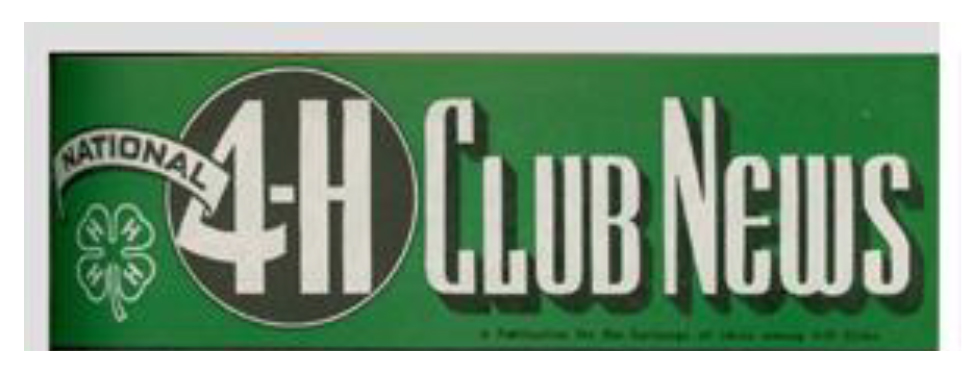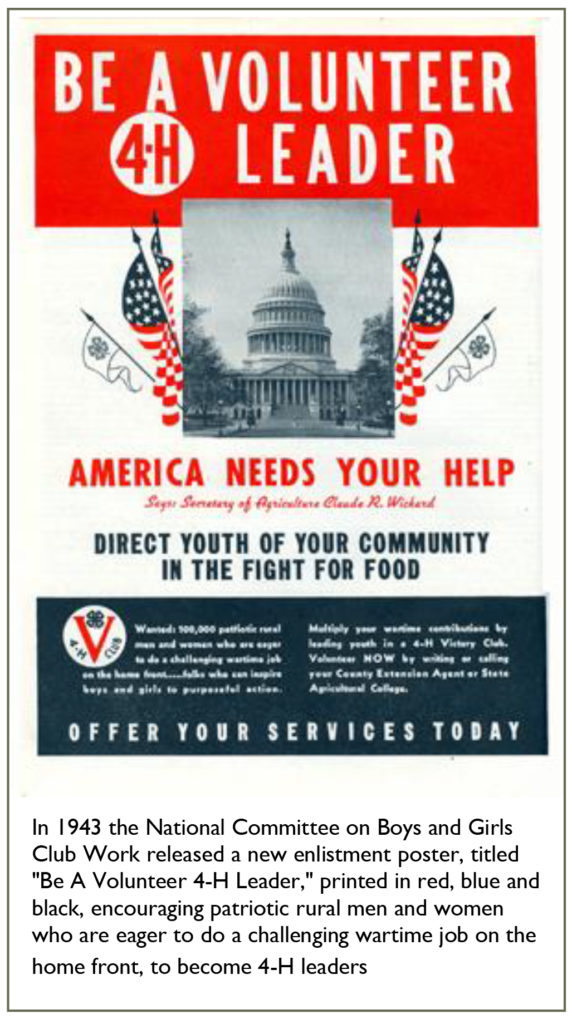
“My name is Jimmy Stewart, and I live in Hollywood, California, and I like 4-H Clubs. I admire 4-H-ers more every time I see these alert young people applying head, heart, hands and health to better living for themselves and others. Now days when we are all disturbed about the rise in juvenile delinquency, we see the need for more boys and girls to share wholesome character and citizenship building activities. Here 4-H has a special contribution to make. Through 4-H, young people wherever they live learn by doing.They do things – make things – and grow things. They grow themselves. So let’s help more young people in town, country, city and suburbia develop through their 4-H learning for living pro- gram. Ask your county extension agent how you can join 4-H or be a 4-H leader.”
Jimmy Stewart (1908-1997) was an Academy Award-winning actor best remembered for movies such as The Philadelphia Story, Rear Window, Mr. Smith Goes to Washington and the Christmas classic, It’s a Wonderful Life. But did you know that he was also voiced national, radio spots –like the one above — about the 4-H program for National Week during the late 1960s?
Stewart was just one of numerous movie stars, sports celebrities, television personalities, politicians and other famous figures who supported and promoted our fantastic 4-H program. Many of these celebrities had been in 4-H, had 4-H connections or just new about the good of this organization.
Stewart’s story is just one of the fascinating, historical stories behind National 4-H Week. Here’s an- other: Would you believe that National 4-H Week evolved out of necessity?
National 4-H Week began as a result of World War II. The attack on Pearl Harbor resulted in many changes in the United States. The focus on national defense took top priority. W. H. Palmer, State 4-H Leader in Ohio, took this need as a call to arms and organized a State 4-H Mobilization Week for Ohio as a means of focusing the attention of 4-H members on what they might do for national defense efforts. State leaders throughout the country loved the idea. As a result, the Federal Extension Service initiated National 4-H Mobilization Week which was observed annually in 1942, 1943 and 1944.
The following year and each year since, it has been observed as National 4-H Week.
The focus during National 4-H Mobilization Week was quite intense and full of purpose. 4-H’ers were enlisted to assist in the 4-H Club war program. 4- H’ers – especially those living on farms – were recruited and encouraged to produce food for rural men and women in the armed services. Additionally, these 4-H members reported to the public how their war-time efforts assisted in family food production, conservation goals and contributions to the armed forces.
In the early years, National 4-H Week was held in the spring. Beginning in 1968, National 4-H Week is now observed the first full week of October, beginning with the first Sunday of October.
Want to read more about historical National 4-H Themes? The National 4-H Week Posters? More recorded radio spots by movie stars, sports celebrities and other famous figures? Larry L. Krug authored a fantastic article on the history of this be- loved week.
Visit the National 4-H History Preservation Program website to read and learn more.

